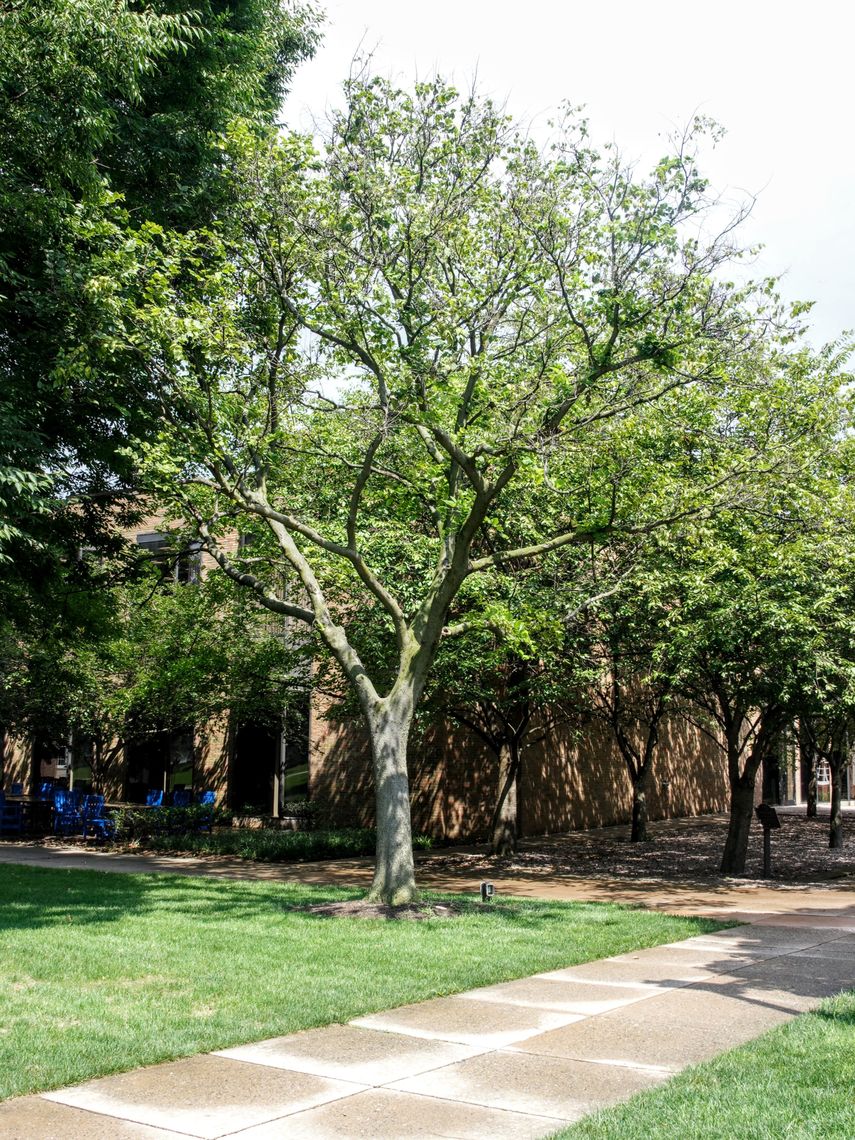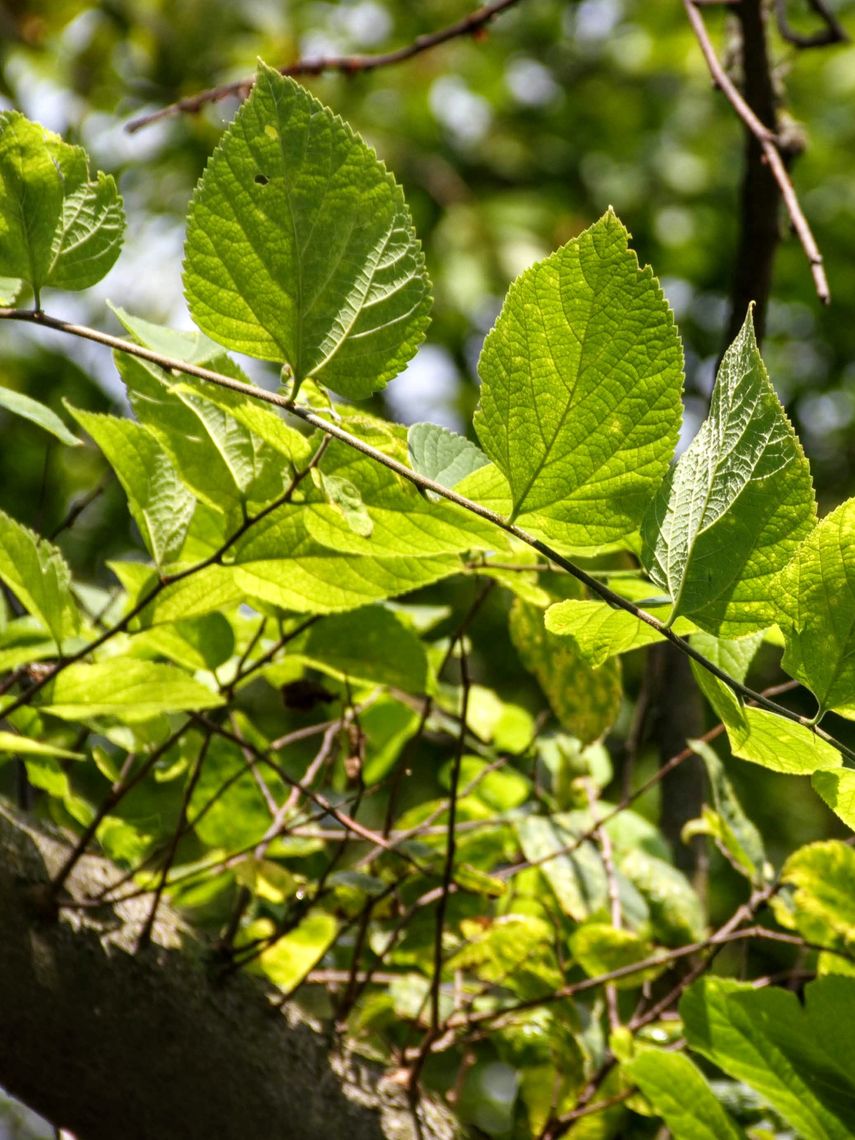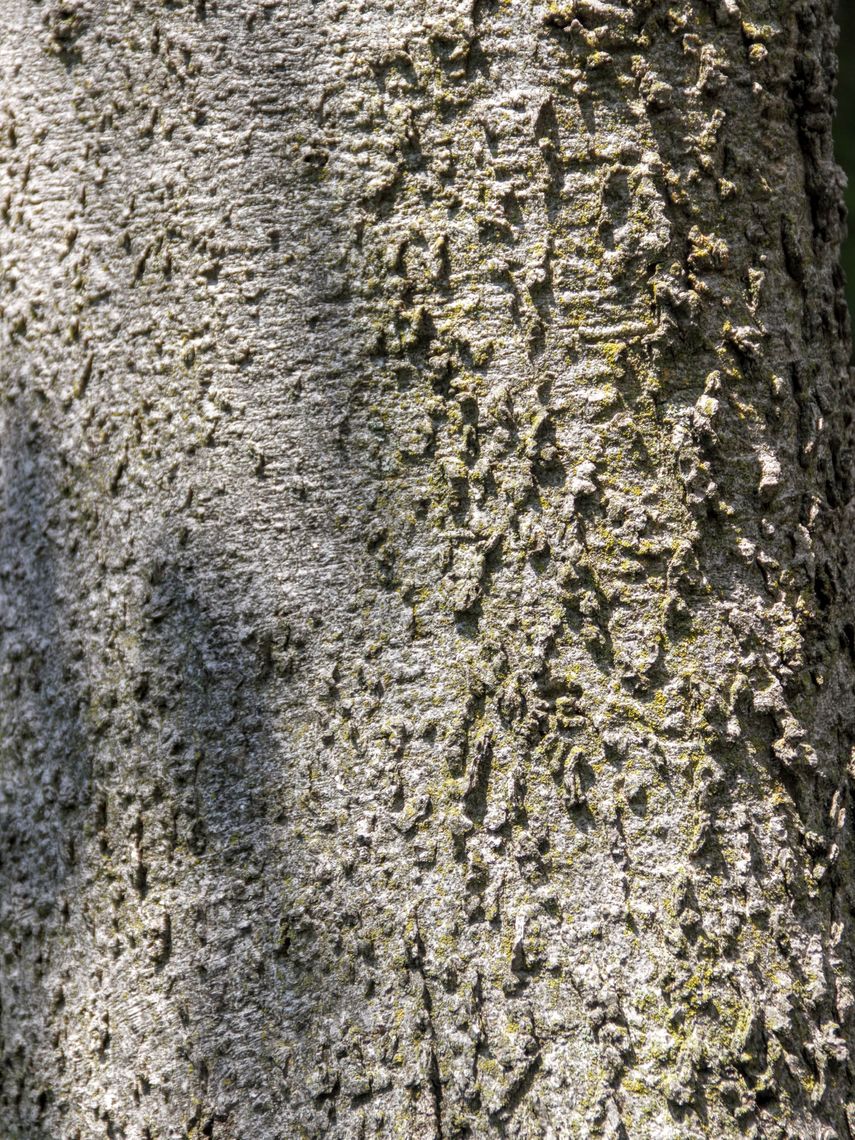Hackberry (Celtis occidentalis)
The hackberry is tolerant to many conditions, including drought, air pollution and wet or dry soils. Its leaves are tear-drop shaped, rough to the touch, and toothed. The flowers on the tree are not overly noticable, but in the summer, the female flowers give way to small round berries which become deep purple when fully mature. These edible berries are sweet and have a round brown seed within. The tree's bark has a wart-like texture. This tree attracts birds and butterflies.
Family: Cannabaceae (Hemp)
Characteristics: The light green leaves are toothed, ovate to oblong ovate, and have a rough texture. In the fall, leaves turn a dull yellow. Small green flowers appear in the spring. Male flowers appear in clusters and female flowers are solitary. The female flowers give way to small round berries that are deep purple when fully mature. Bark is gray and has a wart-like texture, covered in corky ridges. When young, the tree has a pyramidal shape. With age, the tree develops a broad crown and has large branches that arch upwards, and smaller branches that droop downward. This tree grows 40-60 feet high and wide.
Foliage: Deciduous (leaves lost seasonally)
Geographic Origin: Central and northeastern North America (native)
Cultivation Notes: Requires low maintenance. Does best in full sun, but also tolerates part shade. Prefers alkaline, moist, and well-drained soils. Witch's-broom, or clusters of twig-like growths, are common in the Hackberry.
Number on Campus: 2
Sources: Dirr, Morton Arboretum, Missouri Botanical Garden



